by Sherman H. Skolnick 12/17/05
Henry Crown Family, Jenner & Block, General
Electric. and their criminal combine
In the beginning, it was a woman. She said that she was the
major owner of what became in 1919, Material Service Corporation. Henry Crown
was just a very young man. He stopped by her house, she later said, for
sandwiches and cookies..
Yes, Crown later had ways of getting very lucrative street
paviing contracts from "the city fathers" in Chicago City Hall. Simple. The City
Officials were "for sale". So, he "bought them".[She told about in in a very
lengthy recorded discussion.]
He ran her business in an integrated method. From sand-dump to
the streets. He knew how to exert "muscle". Many decades later we chatted with a
sand-pile owner.
"I understand Crown's people were here during the night. I
presume they parked a few bodies. I don't look. I don't ask." He ended the talk
with a worldly chuckle.
Some Europeans let over from World War Two were visiting Du
Page County, just west of Cook County and Chicago. They stopped to look at the
old red brick clock tower, Du Page County Courthouse.
Puzzled, they remarked, "So you have the Gestapo here now, huh?
This is the color and style of building they liked for their local headquarters
at the time of Hitler."
To do their "civic duty", Material Service donated an abandoned
toxic dump as the site of the new Du Page Courthouse. After a few years,
courthouse workers began suffering an epidemic of strange debilitating ailments.
The Liars and Whores of the Press took the easy way out, proclaiming the cause
as supposedly the reputed "mafia contractors" having put in a cheapo ventllation
system. Press fakers know it is personally unprofitable if not also unhealthy to
point an accusing finger at the Crowns.
In the 1960s, the woman claiming she was the true majority
owner of Material Service Corporation sued them in Cook County Cicuit Court, to
force the firm to correct their records. The Judge seemed to be siding with her
and her daughter who kept track of Henry Crown as his Secretary.
Mysterious forces worked to remove the Judge, or make him
disappear, or make him blotted out [take your pick of demise]. By the 1970s,
the Crown Family had a 89% stake in General Dynamics, the major war-monger,
maker of submarines, tanks, and many other weapons. Lester Crown became a top
official of General Dynamics. But back in the Windy City, Lester had a problem.
The Chief Federal Hangman said Lester was facing federal criminal indictment for
his part in a bribery/extortion conspiracy involving road paving contractors.
[We knew a lot about it. One of our secret team put together
the evidence forcing the Crowns to face the music.]
Lester had two choices (1) he could wait, get indicted and
prosecuted and most likely end up with a long prison term or (2) he could work
an unholy deal with the Chicago Chief Federal Prosecutor, in the past always
concerned about a future career in private lawyering as a "bagman" and "fixer".
[The current U.S. District Attorney in Chicago was brought in
from New York. Many are ready to believe Patrick J. Fitzgerald is different!
than the Chicago-types that held that job before him, that typically,
historically, and politically were sooner or later "for sale".]
The Chicago-based law firm octopus, that most always got their
way with the different levels of government in the past, was Jenner & Block,
reputed super "bagmen". In their opinion, one event in particular is, for them,
very "positive"; as to the other, they would have to accept, it was extremely
"negative".
Jenner & Block senior partner/manager, Albert Jenner, Jr.,
sat on the Warren Commission, and helped proclaim that a lone assassin, Lee
Harvey Oswald, assassi nated President John F. Kennedy. Even though 85% of
Americans do not accept the finding, Jenner considered the Warren Commission
conclusion as "positive" as for Jenner.
In 1969, a Special Tribunal was empaneled to consider this
writer's accusations that several of the judges on the Illinois Supreme Court
received bribes. Albert Jenner, Jr., defended the Chief Justice who was found
guilty of impropriety and removed. It was about the only case Chief Crook Jenner
ever "lost". Cynically, perhaps, maybe the massive publicity caused the Special
Tribunal's panel to be "honest".
TRAIN ROBBER PROTECTED
The Henry Crown Family, by dirty tricks, seized control of the
Rock Island Railroad, not to run the railroad for the public good but to
liquidate it for its asset value. As with other bloody work for the Crowns,
super-crooks Jenner & Block did not give a hoot about damage to the public.
Thousands became unemployed and many private businesses went under. Aren't there
laws against protecting train robbers?
THE BILDERBERG SYNDROME, Part One
by Sherman H. Skolnick 7/1/02
by Sherman H. Skolnick 7/1/02
Every year, for almost half a century, they meet in a different
country. Their first meeting was in Holland, in 1954. It was arranged by the
Dutch Monarchy. It took place in the Bilderberg Hotel, which became the name of
this secret society, one of several, forbidden to be discussed by the
oil-soaked, spy-riddled monopoly press.
Mutually pledged to sealed lips are those invited to the annual
meeting. Members of the aristocracies attend of various nations, consisting of
the elites of high finance, politics, espionage, academia, media, and other
titles.
I once interviewed, on tape, the wire desk editor of the
Chicago Sun-Times. "Why does your paper censor stories about the secret society,
the Bilderberg?" Most media honchos pretend never to have heard of this gang of
plotters. But he responded candidly, a rarity, "Well, if we went and then told
about it, we couldn't go anymore. What should we do? Go and talk about it, or
not be able to go?"
The meetings of the Bilderberg Group are about the only place
that competing financial forces sit with one another. The Rockefellers, for
example, are always there. So are their apparent enemy, the French Rothschilds.
Sitting as a sort of neutral intermediary always is a top official of the
Wallenberg banking monopoly of Sweden and northern Europe.
[In 1978, when John D. Rockefeller 3rd was assassinated on the
road to their upstate New York fortress, we were the ONLY journalists (unpaid,
free lance journalists, at that), who dared inquire. He was the father of John
D. Rockfeller 4th, who to be cute, calls himself "Jay", a supposed Democrat,
U.S. Senator from West Virginia. The Rockefellers like to dominate states with
sizeable geography and minerals, but a small population, such as also Arkansas.
In a pinch, to dominate the state it would not cost that much to buy most every
voter and most every media propaganda instrument in the state.Returning the
"favor" of political murder was eighteen years later when the top member of the
French Rothschild Family was murdered in Paris. The American monopoly press was
ordered not to mention in detail, if at all, the death of Rothschild. Or, just
run an innocent little item that the French International baron died of a "heart
attack". Presslord/swindler Rupert Murdoch ordered his print and electronic
media outlets to avoid, if at all, mentioning the death.
The hotel in different countries where they meet each year, are
announced as "closed", for "remodeling", or a "wedding party". One year they
picked a resort hotel on top of a Swiss mountain, difficult to reach except by
air. The host nation agrees to supply a huge, almost secret security force
prepared to brutalize intruders, follow any hardy reporters who may be encamped
nearby, and by various brutality and trickery stop any public knowledge. Hotel
employees are likewise pledged to secrecy, which if they violated it, would be
severely dealt with. Such as never to be able to work again in that nation.
When the Bilderberg met in 1991, in Baden-Baden, Germany, a
purported health resort, invited was a then obscure Governor of Arkansas, Bill
Clinton. They anointed him as the next President of the United States. The
election would be a mere set up. The pressfakers present agreed not to mention,
if at all possible, what they all knew. That Clinton was a walking, talking
scandal. Not every American voter can bring themselves to know or believe
reality. Namely, every candidate for high office is selected because they are
blackmailable. The Establishment has to reserve the right to pull on the chain,
any time they felt like it, to shut down such a candidate if somehow elected to
high office. This, anytime the "powers that be" deemed it necessary, to shut him
or her up, to remove them, or, scare them into silence with weird violence
directed against the candidate/president's circle.
Groomed since a teen-ager by the American CIA, Clinton in
the1992 Presidential election shadow-boxed with his mentor, George Herbert
Walker Bush, former head of the secret political police. Daddy Bush has been
with the espionage cartel since 1959, when they helped set him up with six
hundred worldwide affiliates for "his" petroleum drilling empire, Zapata Oil,
later, Zapata Offshore, later Pennzoil, still later, Pennzoil/Texaco.
Earlier, as Arkansas Governor, Clinton participated in the
hundreds of millions of dollars involved in the dope traffic through the
southern states, run by the American CIA, in part through the espionage airport
at Mena, Arkansas. Clinton's partners were Daddy Bush, Ollie North, and
Congressman Henry Hyde (R., Ill.), who was also head of the CIA "black budget",
funds for covert operations including domestic and overseas political
assassinations. Return shipments of air-shipped weapons, went to unlawfully aid
the Contras in Nicaragua.
Clinton, as known to his handlers and partners, was clearly
subject to blackmail and being terrorized.
He was selected to be an Oxford College, Great Britain student
by the Rhodes Trust. As not widely known, but nevertheless true, the Rhodes
fortune is pledged to overthrow the American Republic, to return this continent
to puppet colonies, and the American inhabitants to be subjects of the British
Monarch in London. [Visit our website series, "The Overthrow of the American
Republic".]
While in England, Clinton, a sexual predator, suffering from
having his flag up too often, priapism, raped a British woman. He was forced to
terminate his studies at Oxford and abruptly leave Great Britain, with the
proviso that he would not be criminally prosecuted as long as he never returned.
In the 1992 Presidential Election, Daddy Bush and Clinton agreed not to bring up
each other's dirty laundry. Clinton would not mention the treasonous deal done
by the Elder Bush in Paris, October, 1980, to arrange weapons shipments to Iran,
in return, Iran would refuse to return the 52 U.S. hostages from the Teheran
Embassy, until the Reagan/Bush ticket was safely inaugurated in January, 1981.
If incumbent President Jimmy Carter could have avoided seeming to be a wimp and
get the return of the hostages right before the election, it would, to Bush, be
the dreaded "October Surprise". And Clinton agreed not to mention Daddy Bush's
treason in the Iran-Contra scandal.
Over and above the blackmailable items known as to both Clinton
and Bush, was Clinton's position with the aristocracy that gathers each year as
the Bilderberg Group. The person using the name "Clinton" should rightfully be
called William ROCKEFELLER Clinton. Our interviews with middle-level members of
the Rockefeller Family, convinces us of the validity of our position. Namely,
that "Clinton" is the illegitimate great grandson of old John D. Rockefeller,
founder of the infamous petroleum monopoly, Standard Oil.[Other such details,
see our website series on Wal-Mart, headquartered in Arkansas.]
Several terms prior to "Clinton", Winthrop Rockefeller was
Arkansas Governor. He was known to have fathered, throughout the U.S., at least
five illegitimate children. [The legitimate great grandson of John D., is "Jay"
Rockefeller whose wife, Sharon Percy Rockefeller, is a top mogul of public tv
and radio. We call it National Petroleum Radio.]
Throughout his career as Governor and President, "Clinton" was
kept on a chain, by among other things, terror-tactics. A strange one-motor
airplane with an already dead pilot, somehow eluded all the measures to protect
the White House, and came within a few feet of crashing right through President
Clinton's White House bedroom window. The White House rooftop battery of
missiles was somehow turned off that night. The plane had to be guided, that is
vectored, from accomplices on the ground, to steer around all the obstructions
and buildings in its path. Remote controlled? Perhaps. During his Presidency,
more than a hundred of his confidants, friends, circle of friends, and such were
murdered. His Little Rock campaign chief, Jerry Parks, was murdered,
mobster-style. Various of his U.S. Marine and other guards, who knew a lot about
him, were one by one, snuffed out in strange, so-called "accidents". His pal,
Vincent W. Foster, Jr., was murdered and explained away as a "suicide". Other
websites have compiled a lengthy list of these happenings. In simple terms,
those who meet at the Bilderberg Group, are aristocrats, the handlers of their
retainers, stooges, spy chiefs, bank bosses, and such. Seemingly little
understood is the basic premise of aristocracy. When one nation's aristocracy,
Establishment, whatever you want to call them, has a falling out with that of
another nation, that is grounds for war. If bad enough, it becomes a World War.
One group plans to have more power, consolidate their territorial position, and
silence the grumbling of unemployed ordinary people, through the drums of war,
to the destruction and detriment of the opposing aristocracy. Used to foment
bloody conflict are a massive media campaign of hate against the Establishment
of the opposing Ruling Class, now designated as an Enemy, previously having been
business partners. To get the ordinary populace into the right mode, they become
bombarded around the clock with martial music, and appeals to flag, God, and
such terms as Fatherland and Mother Russia.. In plain terms, the aristocracy
goaded, pumped up, poorly informed workers to murder, for flag and country, the
counterpart workers of the opposing aristocracv. In some instances, one
aristocracy still does business with the other, in the midst of the War. [See,
"Trading With the Enemy", by Charles Higham.]
Depressions, on the other hand, are a combination of an
orchestrated event combined with the cycles of circumstance. The aristocracy
plans to grab up the real estate, commercial and residential, the collapsed bank
funds written off, the bloated pie in the sky stock ownership, and other assets
of the powerless suckers, for a few pennies on the dollar. All the while, the
ultra rich, through their press whores, falsely proclaim that the return of
prosperity is just around the corner. [It may take fifteen years and another
instigated war to do that.]
What is plotted and agreed upon, as shown by the circumstances
of a secret society like the Bilderberg Group should NOT be described or labeled
as merely a "conspiracy". And we are NOT "conspiracy theorists" [You do not
succeed in putting bribe-taking judges in jail, as we have, for decades, by
foolishness and "conspiracy theories".] These are the known ways of the
Establishment, the Ultra Rich, the Aristocracy, by whatever label. Bred into
them from birth is this mindset for power and enrichment little-understood by
generally good-hearted, ordinary people who would not instigate a bloody war for
profit.
So, sooner or later, the way the plutocrats conduct their
horrors of bloodshed and financial smash-ups, leads to Revolution. Europe, to
their credit, have had more or less genuine upheavals, Revolutions. America
never has had such.
[A useful primer is Ferdinand Lundberg's great documented work,
"The Rich and the Super Rich", first published in 1968, but timely even now. His
earlier work has a lot of even more revealing details, published in 1937, still
on hand in some large lirbraries, "America's Sixty Families".]
To understand the ways of the Bilderberg Group, you have to
have a sharp eye for calendar events and circumstances. You have to carefully
notice what happens usually in the month or so AFTER their annual secret
meeting. Note these happenings within thirty days of the Bilderberg Group
meeting, May 30 to June 2, 2002 (they actually adjourned a day earlier), at a
hotel at Chantilly, Virginia.
===Suddenly the monopoly press, headed by those presslords who
attended the meeting, such as Donald Graham, head of the Washington Post, Conrad
Black, Canadian/U..S. press empire, and others, on behalf of the Ultra Rich
started a series of scandal disclosures. Such as that the second largest long
distance service in the U.S., WorldCom, parent of MCI, had concealed
book-cooking of almost four billion dollars. And thus, WorldCom stock plummeted
from about sixty dollars per share to eight pennies per share, and faces
bankruptcy.. Such as, Xerox, the original copy machine empire, to apparently
falsely show a profit instead of huge losses, cooked their books to the tune of
six billion dollars. Such as Clear Channel Communications, owner of 1200 U.S.
radio stations, had reportedly likewise cooked their books. "Clear Channel Says
No Accounting Issues", Business-Reuters, Los Angeles, June 27, 2002. Another
sudden revelation within the thirty days after the Bilderberg meeting in 2002,
the advertising giant, OMNICOM, had reportedly likewise cooked their books by
way of gobbling up other advertising and marketing agencies. "Omnicom gutted on
debt review", CBS.MarketWatch.com, June 27, 2002.[OMNICOM are the parent of DDB
Chicago, which represented the advertising and marketing, at the same time
apparently, of supposedly competing soda pop companies, Coca-Cola and
Pepsi-Cola. See the details, many in the court record, but little known, in our
website series, "Coca-Cola, CIA, and the Courts.]
===The British-owned newspaper now gaining large circulation as
well in the U.S. is Financial Times of London. On a Chicago dateline story, by
their correspondent Jeremy Grant, they opened up the reputed scandal that
mammoth General Motors had cooked their books. For a while, General Motors stock
was suspended in trading on the Big Board. "GM denies accounting problems",
Financial Times, June 27, 2002.
===A few weeks BEFORE the Bilderberg 2002 meeting, the New York
Times suddenly attacked a previous sacred cow, General Electric, implying G.E.
engages in book-cooking. New York Times bigshots often attend Bilderberg
meetings. "Wait a Second What Devils Lurk in the Details?", by Gretchen
Morgenson, New York Times, April 14, 2002.
===And then there was the story that bigshots of Apple Computer
sold millions of dollars of their shares in the company just before really bad
news was disclosed.
These scandalous details, pave the way for foreign
aristocracies to get an armlock on American business. These details were
apparently long-known to the accounting firms, but not revealed until Bilderberg
Group gave the signal, "Wreck them now! Get them!" Little known, most of the big
accounting firms have as their parent firm, a foreign enterprise. Such as Arthur
Andersen is owned by a Swiss outfit. Deloitte & Touche is actually owned by
a Japanese firm, Tohmatsu. As we have detailed, Great Britain, at least since
the war of 1812 when they burned down our Capitol, has planned to grab this
continent back. And for that purpose, they were involved in the political
assassination of three U.S. Presidents. [Visit our extensive website series,
"The Overthrow of the American Republic".]
Of course, the Liars and Whores of the press will not link up
these happenings. Remember, if good witnesses or documents are hard to get,
circumstances alone, on occasion, are even sufficient to send a criminal
defendant to the electric chair.
Wars, Depressions, vast theft of properties and assets, and
political murders are not merely purely accidental. They are not a conspiracy.
Just the day to day, month to month, year to year, and decade to decade way of
conducting matters of the Establishment and their meeting clubs, their secret
societies, of which Bilderberg is just one.
More coming. Stay tuned.
The Gold Gamecocks, Part One
by Sherman H. Skolnick 6/17/02
The Gold Gamecocks, Part One
by Sherman H. Skolnick 6/17/02
For many years the Chicago Gold Conference met in the Windy
City. In years past, I used to go to their annual meeting in my home town. Funny
thing. I was the only reporter that showed up. And I am only an unpaid,
freelance reporter that heads a court reform group investigating and researching
banks and such. We coined the term Banker-Judge to label the way the corrupt
Bench and Bar operates.
I learned a lot interviewing gold mining engineers from all
over, top officials of the World Gold Council, sellers of shares in smaller
mines, and an audience of gold bugs.
In the 20th Century, gold had a sorry history in the U.S. In
the 1932 Presidential Election, candidate Franklin Delano Roosevelt pledged that
he was going to keep gold as the backing of the U.S. Currency. At the time, gold
was pegged at twenty dollars per ounce. Workers, like my elders, enjoyed having
gold coins in their pockets as payment for their labors.
Considered a patrician, Roosevelt seemed to oppose the very
aristocracy of his origin. But not really. Right after being inaugurated in
1933, Roosevelt declared a Bank Holiday. Many smaller, community banks did not
survive the closing down of the banking system. Ordinary folks seemed to like
FDR. Yet, he rescued the big banks, the J.P. Morgans and such, at the expense of
the small fry.
[At the time of the Great Depression, there was a large
foreign-born element in the U.S. and they were satisfied to sleep under bridges
when it rains. As long as they were the bridges in America. So there was no
basis for a revolution.]
A proper study of the 1930s would inevitably show Roosevelt was
one of the leading counter-revolutionaries in American if not world history. He
saved the ass of the Ruling Class. The Chicago Tribune, long a backward,
reactionary apologist for the rich and their mistreatment of minorities and
workers, used to rail against Roosevelt as "That rotten cripple in the White
House!"
The Tribune got their newsprint from Canada, by a 19th Century
Charter signed by the King of England with the blessings of the Jesuits, in
Canada.
Up to the time when the Tribune Company stock went public in
the early 1980s, the media giant was openly anti-Black and anti-Jew. We call
them the "Queen's Newspaper", since a large amount of their stock is owned by
the British Royals. The Tribune remains viciously anti-Irish, forever panning
Irish public figures in Chicago.
About twelve years before becoming President, Roosevelt, as an
adult, was stricken with infantile paralysis, polio. The U.S. Secret Service,
when he was President, saw to it that no photographer dared make a picture of
him sitting with his braces in his wheelchair. Such photographers knew their
cameras, if not their heads, would be broken by Roosevelt's guards. When I got
polio as a child, my impoverished parents successfully appealed by letter
directly to President Roosevelt, to open the doors of hospitals closed to us as
poor people and Jews. For a while Roosevelt was my hero.
Now, years later, since 1991 I do a taped weekly public access
Cable TV Show in Chicago. Our specialty? Fingering local media skunks as being a
foul smoke-screen of the secret political police, the FBI and the American CIA.
I get feedback of what the media s.o.b.'s among themselves hollar about me.
"That paranoid Jew cripple on the tv!" is their favorite put-down of our
long-time popular non-commercial show, "Broadsides".
[Although many of those who manage the network media outlets
have Jewish surnames, they are merely the stooges, NOT the owners. In the U.S.,
on the television, there are few actual Jews reading the news or commenting on
current events. And, few, if any, senior citizens. And almost no one who sits in
a wheelchair or walks with crutches or a walking device. A good reference is the
book, "The New Crowd The Changing of the Jewish Guard on Wall Street", by Judith
Ramsey Ehrlich and Barry J. Rehfeld, Little Brown & Co., 1989. The book
documents how the big Wall Street investment bankers with Jewish surnames have
not been actual practicing Jews for more than three generations, having
converted to other religions.]
Returning to the timeline, in 1934, less than a year after
Roosevelt was installed as President, in violation of his pre-election pledge,
he ordered that the possession of gold by Americans is illegal. He devalued the
paper money to a little over 35 dollars per ounce of gold. Roosevelt's big money
pals, however, were not effected. More than a month before he was inaugurated,
they had shipped THEIR GOLD to Switzerland and elsewhere out of the U.S. The
aristocracy had a bonanza through their offshore connections and their
out-of-the-U.S. gold.
As a child I used to ask my elders, "You had a few gold coins.
Why did you surrender them?" Their answer was, "We liked Roosevelt. He ordered
it. Besides, the Secret Service would grab us if they found out we had gold
after 1934." The Federal law outlawing gold for Americans stayed in effect until
1975. A gold promoter was silenced, in Indianapolis, when he was murdered by
being thrown out of a high building window.
One crusader for the truth was Tom Valentine. He ran in Chicago
a national magazine, the National Tattler, demanding that there be an audit of
Fort Knox, supposedly the repository of U.S. gold. After much todo, one vault of
Fort Knox was opened. Guess what? The only stuff found were some very impure,
orangish colored metal substances. Apparently melted down coin metal from what
was seized in 1934. No actual gold bars. So where was the gold horde?
A U.S. General, at a later date, stated off the record to some,
that he headed a military convey of trucks that took the Fort Knox gold to the
East Coast, where it was shipped to England in the 1960s, to stem a run on the
Bank of England. The British had a lot of trouble caught repeatedly denying they
were going to devalue the Pound Sterling. Amid their bank panic, some other
countries apparently ended up with the U.S. Fort Knox gold.
As the bankers for the Vatican, the French Rothschilds have
always influenced the gold markets. In the early 1980s, amid a liquidity crisis
in the U.S., gold briefly reached over 800 dollars per ounce. By the late 1990s,
the French Rothschilds together with other European bankers started a campaign
to assist the greedy investment bankers of Wall Street, the bullion bankers.
Such as Goldman Sachs & Co. (we call them Goldman Sucks), and J.P. Morgan,
bullion banker for the British Monarchy. For a while the scheme worked. The
private central banks, as a cabal, supposedly were selling portions of their
gold treasury. The price of gold by 1999, was driven down to 252 dollars per
ounce. The liars and whores of the press, the paper money crowd, kept
circulating stories that the price of gold was going down to at least 200
dollars per ounce.
Actually, the private central banks, as a cartel, leased out
their gold at rates as low as one per cent, enabling the investment fakers to
falsely pump up the stock market to catch in suckers and amateurs. The Bank of
England, as an example, drove down the price of gold falsely offering gold that
did not belong to them. About 1990, with the downfall of the Soviet government
in Moscow, thousands of tons of THEIR gold were stolen and conveyed OUT OF THE
COUNTRY by the corrupt bureaucrats in Moscow. Having custody of the purloined
gold were bankers in Holland who permitted the Bank of England to fake up gold
auctions, offering this stolen gold. Was the gold ever turned over to those who
supposedly bought it at auction?
At the time gold was driven down to 252 dollars per ounce, the
American pressfakers propagandized with stories, like "Gold has no purpose",
"Gold is a barbaric metal. There is no need for any modern country to have it.."
Contrary viewpoints, of course, were not allowed.
Notice what happened in 1987. Somehow, I predicted, six months
ahead of time, the exact October Monday date of the Stock Crash. I told
acquaintances and friends who I believed where in the markets, with a blunt
statement, "You better get your hind quarter ouf of Wall Street, sucker!" With a
sneer, most of them simply insulted me, "Who the hell are you, Sherman? You are
not a college graduate, have no MBA. Your main thing is you run after what you
claim are crooked judges. You don't know nothing about business." (They
disregarded our investigations of Banker-Judges. That is, those who often own
and operate, for corrupt purposes, the bank across the street or across the
alley from the courthouse. Such as shown by the biggest judicial bribery scandal
in U.S. history, touched off by us, detailed in the book "Illinois Justice", by
Kenneth Manaster, published in the fall of 2001. The scandal caused the downfall
of Illinois' highest tribunal, the Illinois Supreme Court.)
The Saturday after Black Monday, the October, 1987 Crash, was a
family get together. I guess I sometimes cannot hide my sarcastic streak.
"So, did you get your ass out of the market like I predicted?"
They did not bother to hurl an insult. They simply picked up their plate of food
and moved away from me. As they walked away, I added my cynical remark, "I guess
you lost big, sucker, huh?"
In the weeks after the 1987 Crash, the business press fakers,
like the Wall Street Journal, said nothing about the fact that the Federal
Reserve, a private central bank masquerading as tied to the U.S. government,
intervened in the six weeks after the debacle, to keep gold from topping 500
dollars per ounce. Then the price subsided. From having gone over the years to
the Chicago Gold Conference, I learned that most of the savvy sorts there
believed that there was a secret financial trip-wire. That is, that the Federal
Reserve would create a false emergency to absolutely stop gold from topping 410
dollars per ounce.
In the fight between the gold bugs and the paper money crowd,
those who like gold gloat, "Hey, sucker, we are in with the killer yellow metal.
Who are YOU in with?" The bottom line is that gold is independent money,
beholden to neither dictators or presidents or prime ministers. Simply put, if
gold goes up, paper money goes to Hell. More about gold.
Stay tuned.

 eople often ask me, in
terms of my argument about "ten steps" that mark the descent to a police state
or closed society, at what stage we are. I am sorry to say that with the
importation of what will be tens of thousands of drones, by both US military and
by commercial interests, into US airspace, with a specific mandate to engage in
surveillance and with the capacity for weaponization - which is due to begin in
earnest at the start of the new year - it means that the police state is now
officially here.
eople often ask me, in
terms of my argument about "ten steps" that mark the descent to a police state
or closed society, at what stage we are. I am sorry to say that with the
importation of what will be tens of thousands of drones, by both US military and
by commercial interests, into US airspace, with a specific mandate to engage in
surveillance and with the capacity for weaponization - which is due to begin in
earnest at the start of the new year - it means that the police state is now
officially here.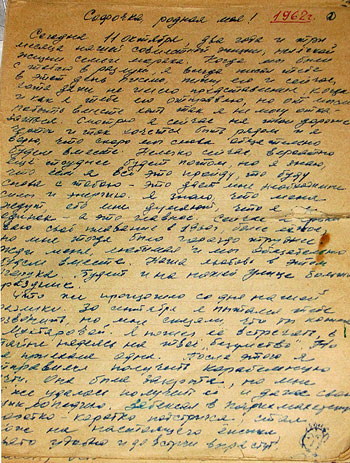

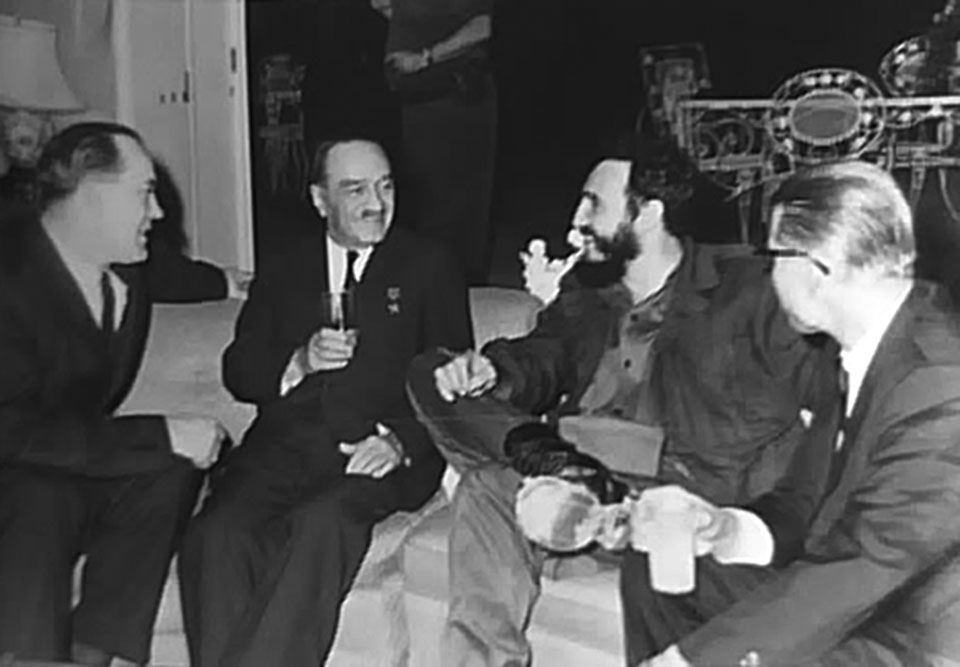

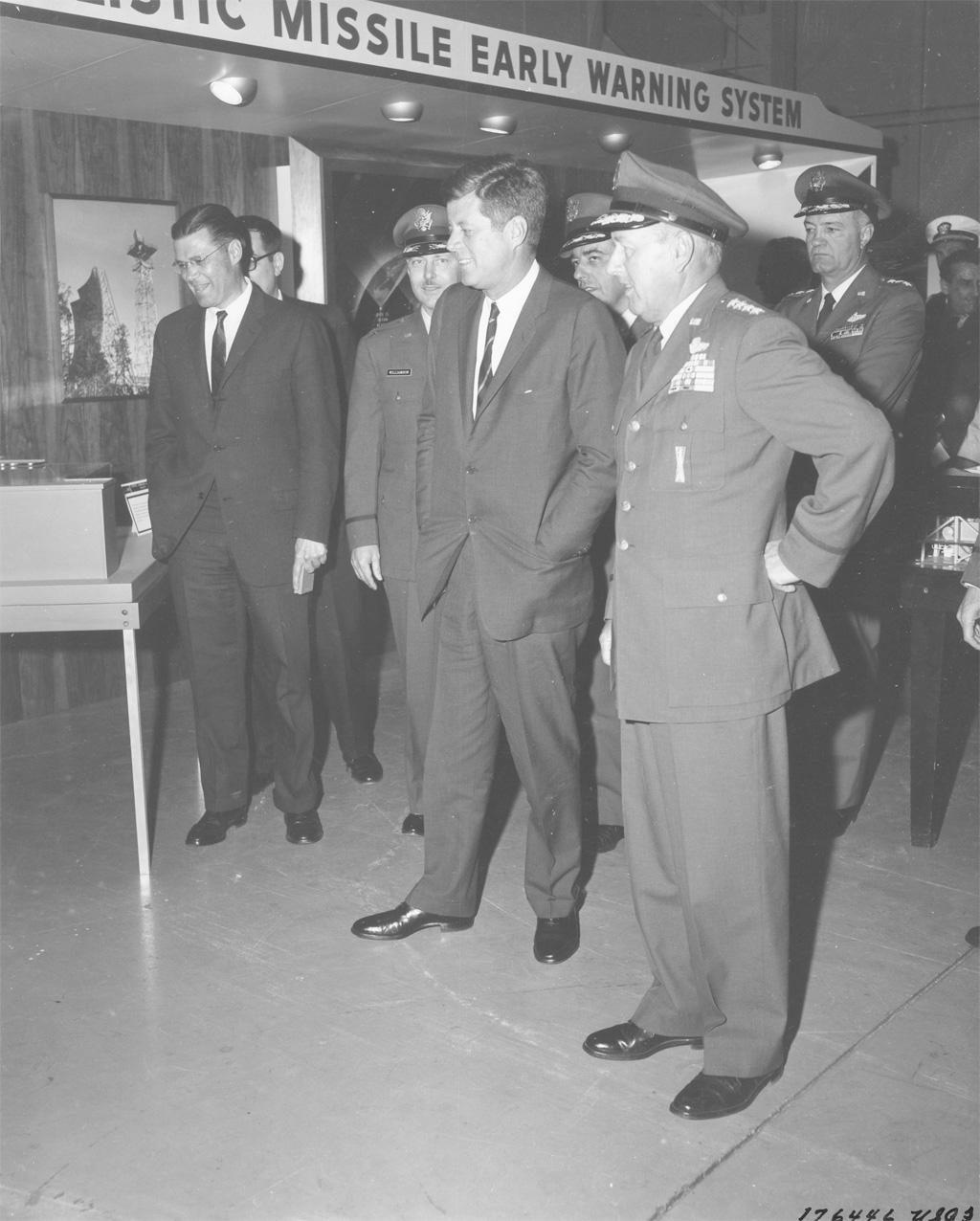
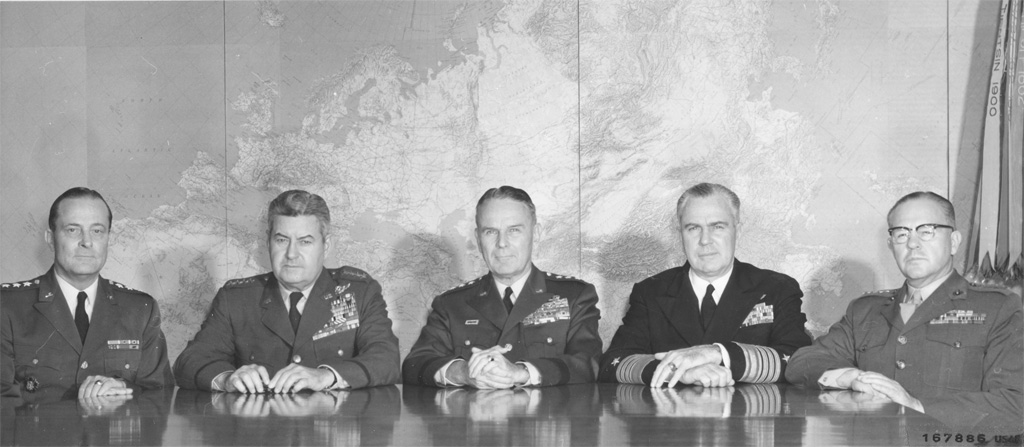
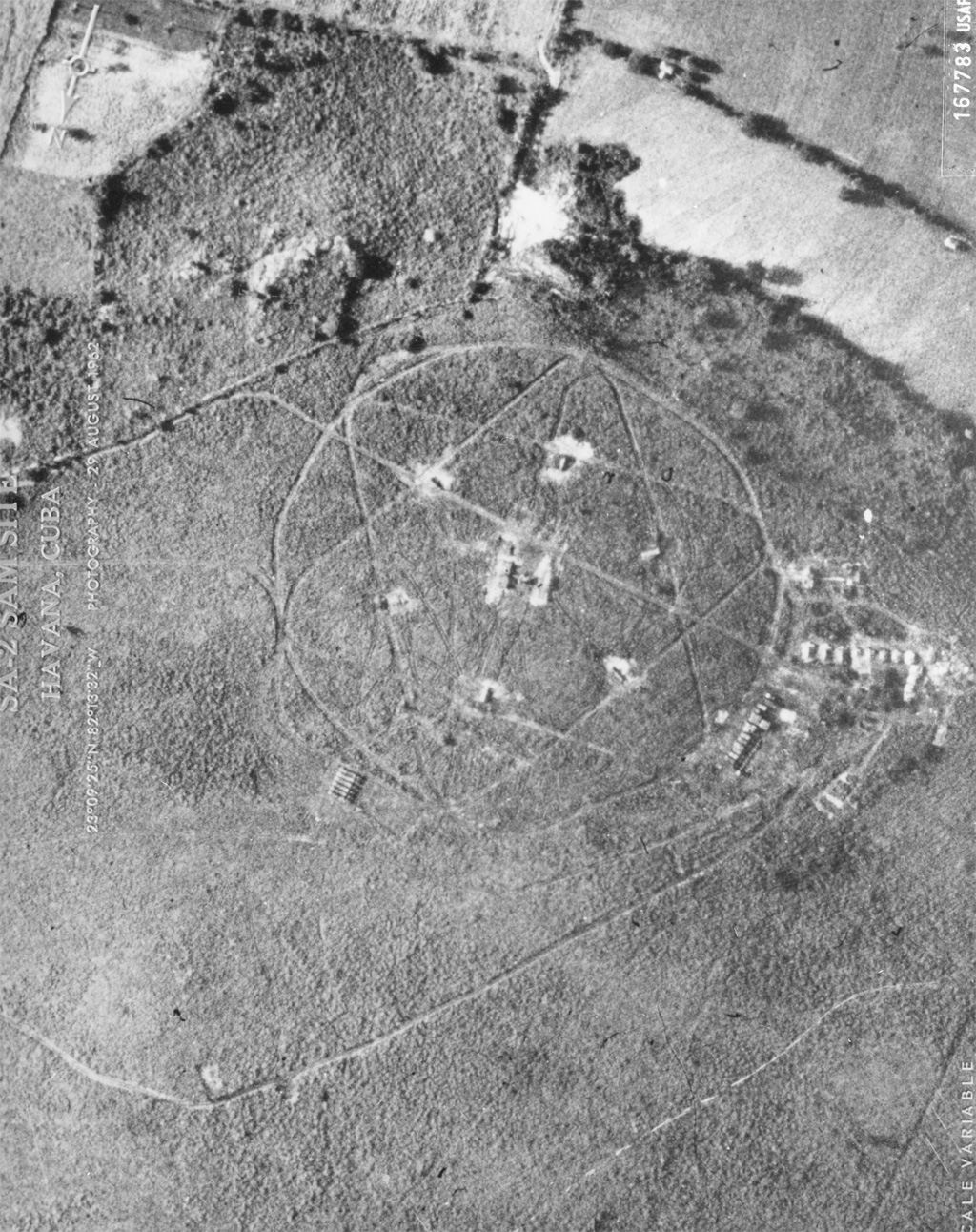
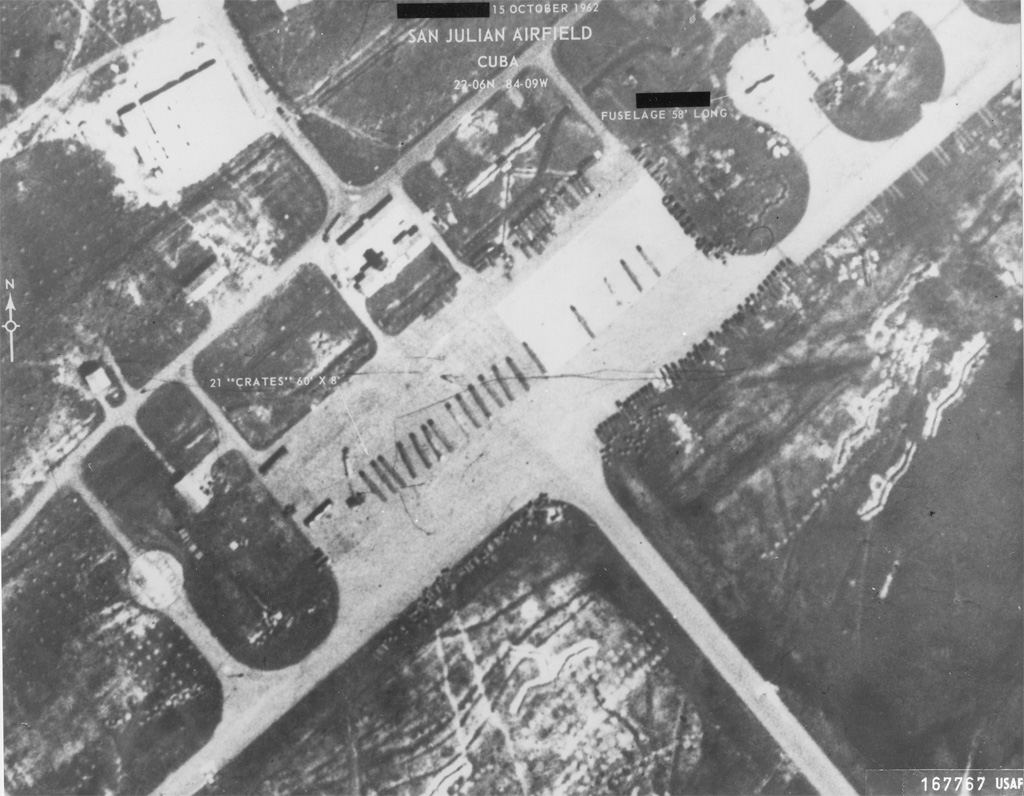

Comments